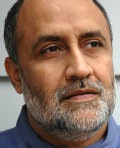Scorpiogenius makes a compelling arguement for “Taller, Greener, Better”.
The Civil Aviation Ministry and the Airport Authority of India have trimmed down the height restrictions for constructions around our airports. This allows for buildings to sprout higher into the skies above our cities, almost double to what was permitted until yesterday.
I expect Kerala to significantly make use of this waive in the existing law. Kerala has been the only state outside the megapolis Mumbai, and to a lesser extent Gurgaon, to embrace the highrise culture. The trend which was kicked off in Cochin in the early 90s slowly spread to even the smaller Municipal towns of the state. Its become a fashion statement with even towns like Thiruvalla and Kottayam with just over 1 lakh population hosting 20+ structures.
Even though it may take some time for our local self Govts to adapt themselves to the law, it is certain that the Architects and builders would be licking their lips to make full use of it. Kerala is only second to West Bengal in population density; with 35 million inhabitants @ 825/sq km and severe scarcity of de-notified habitable land, it is common sense to understand that this model of urban development suits us best.
I’m a sucker for tallies, yo! I admire the style of urban development followed in North America and Australia which plots a highrise CBD, with suburbs harbouring midrises and housing estates. Each suburb is planned to be self-sufficient on its own for their shopping and entertainment needs, with residents travelling to city-center only for business and work. The CBD builds and rebuilds itself with major improvements necessary only in the transportation network.
Continue reading at Scorpiogenius.
